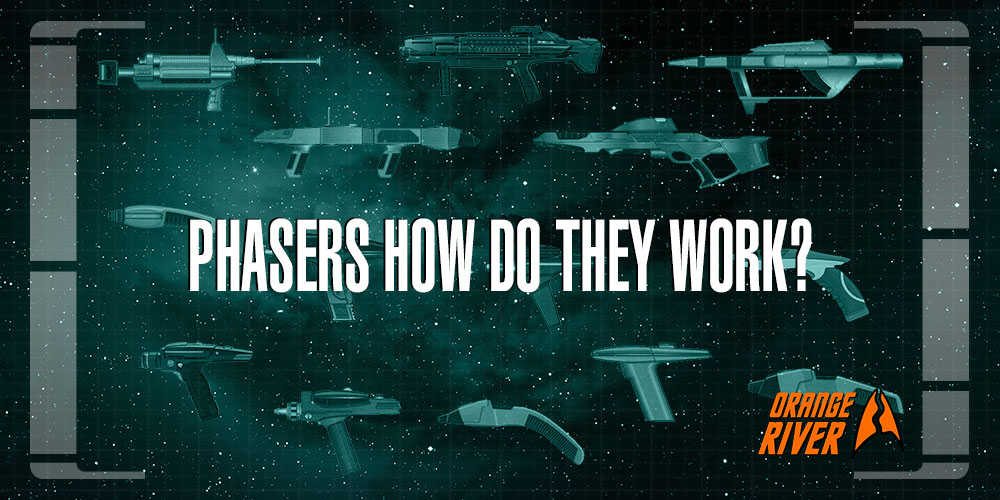Hey guys, Tyler here. Phasers are one of the most iconic pieces of technology in Star Trek. A common standard sidearm in the arsenal of Starfleet and other spacefaring powers, phasers are what are called directed energy weapons.
They inflict damage via a beam or pulse of electromagnetic radiation or high-energy particles. Introduced in Starfleet during the 23rd century, both phasers and disruptors (a higher-powered weapon class) superseded projectile weapons, which were considered more “primitive.” While most phasers are classified as particle weapons, others are classified as plasma weapons and utilize a completely different form of energy.
Regardless, phasers can pack a powerful punch, with settings ranging from “stun” to, well, “vaporize” and everything in between. But how can a handheld weapon like this store so much energy and inflict so much damage? Today, I’ll attempt to answer this question using both in-universe and real-world scientific concepts. So, without further ado, let’s get started.

Predecessors
Before there were phasers, a wide variety of other energy weapons were used by humans during the mid-22nd century. One standard issue sidearm used by members of both Starfleet and the Earth Cargo Service during this period is the EM-33 pistol. The EM, of course, stands for electromagnetism. We see in other Trek shows that electromagnetic pulses are used to disable enemy weapons, disrupt sensor grids, jam communications, and trigger solar flares.
But based on the special effects in the Enterprise pilot “Broken Bow,” the ammunition that EM pistols use is actually the plasma bullet, later identified in “Shadows of P’Jem.” Indeed, the full name of the EM-33 is the EM-33 Plasma Pistol. Rick Berman and Brannon Braga stated that they intended the EM-33 to be a type of “pulse gun,” the same class that includes plasma rifles.
Plasma weapons are shown to not be particularly high yield but are still capable of killing a target. These weapons seem to be an intermediary step between traditional projectile weapons and phase weapons.
As the name suggests, plasma weapons fire a bolt or stream of plasma, an excited state of matter that consists of ionized gas. Plasma is the most abundant form of ordinary matter in the universe, and it is usually associated with stars.
Other common generators of plasma include lightning strikes, but they can also be artificially generated by subjecting a neutral gas to heat or electric current such as in neon signs. In Star Trek, plasma is used to channel power to systems aboard a starship, and it can be stored in canisters or infusers before being installed in plasma weapons.
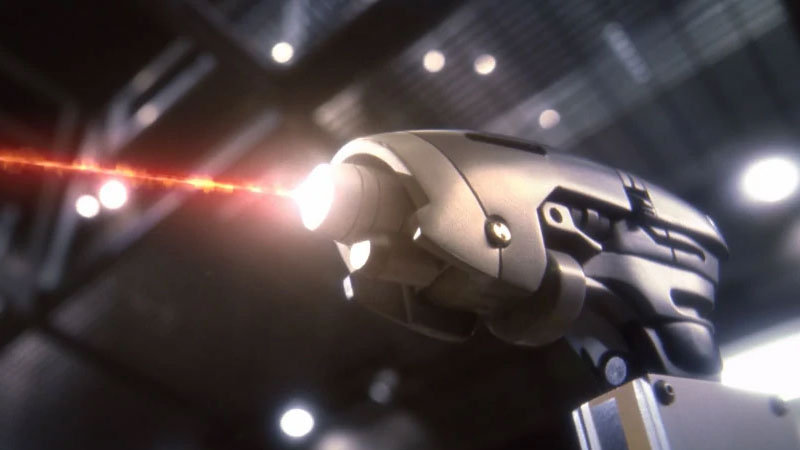
Even in the early seasons of Enterprise, though, we see that some plasma weapons like the EM-33 have fallen out of use by the 2150s. The EM-33 in particular has the disadvantage of the user needing to compensate for particle drift. Even after the EM-33 and its ship-mounted counterpart, plasma cannons, are phased out, other plasma weapons like the pulse rifles do stick around.
But the primary replacement for EM pistols and the like appear to be phase-modulated energy weapons or phase weapons. Besides phase cannons mounted on starship hulls, handheld phase weapons generally come in two varieties: particle rifles and phase pistols. Used by both Starfleet and MACO personnel, these weapons utilize a phase modulator to control the blast yield.
While particle weapons generally operate under the same principles as laser phasers—that is, bombarding targets with destructive particle streams—the main differences seem to be general energy output and maximum damage.
Phase pistols have a particle yield that is usually kept under five megajoules, though it can be set as high as ten megajoules. Now, if you’re like me, saying “X number of megajoules” doesn’t really conjure up anything specific. So here are some examples. Five megajoules is higher than the energy released by the explosion of one kilogram of TNT, enough to destroy or even obliterate a small vehicle.
Furthermore, the NX-01’s phase cannons have a maximum power output of 500 gigajoules, equivalent to the yield of the 2020 Beirut explosion. This event killed at least 218 people, injured over 7,000, and further displaced over 300,000, causing $15 billion in property damage.

Phase-Pistols to Phasers
Okay, before this gets too far out of hand, let’s reign things in a bit. We’ve talked about the yields of phase pistols and pulse rifles and all that good stuff, but what exactly is the difference between 22nd-century phase weapons and 23rd-century phase weapons? As it turns out, the main characteristics that separate these two types of weapons are power output and the types of particles that make up the blast stream.
Typical Starfleet phasers invented in the 23rd century and still used in the 24th century, known as type 2 phasers, are nadion-based particle weapons. The nadion is a fictitious subatomic particle that, according to the Star Trek: The Next Generation Technical Manual, is capable of liberating atomic nuclei. The manual indicates that phasers release a beam of nadions that are refracted through superconducting crystals, much in the same way that dilithium crystals help regulate the matter-antimatter reactions in warp cores.
As for power output, as far as I can tell, we’re never explicitly told what a standard-issue phaser’s maximum yield is, but phaser rifles—or type 3 phasers—can output 1.05 megajoules per second. Type 3 phasers also have sixteen power settings, including stun and kill.
They also have fully autonomous recharge capability, multiple-target acquisition, and gyro-stabilization. The much smaller type 1 phaser, which is often used as a “concealed carry” option on more diplomatic missions, has eight power settings that also include stun and kill.
Type 1s are also much less powerful—for example, in the 23rd century, type 1s lack sufficient power to harm a silicon-based life form such as a Horta. Additionally, 24th century type 1s can be programmed to fire automatically at set intervals. Oh, and unlike phase-pistols of the 22nd century, all of these more advanced phasers are powerful enough to vaporize or disintegrate a person.
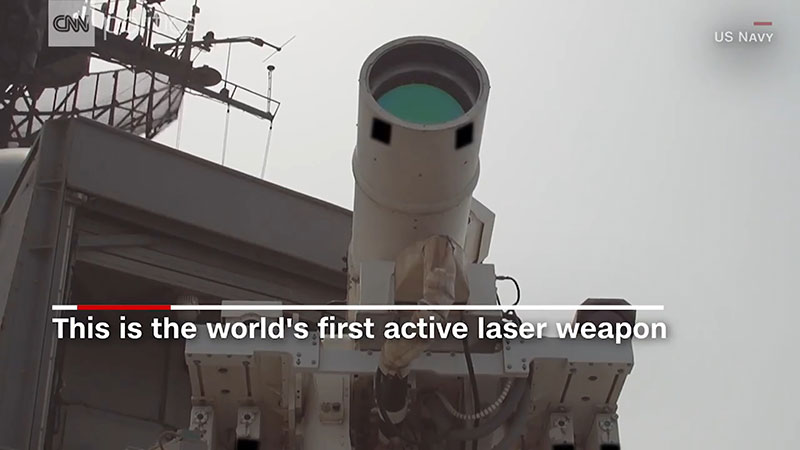
Real-World Direct Energy Weapons
Another pressing question remains, though—one that in large part motivated me to make this video in the first place: how is it possible for handheld weapons like phasers or even phaser rifles to have such a staggering yield? Keep in mind the analogies I drew earlier when discussing the output of phase pistols and phase cannons.
These weapons operating in the multi-megajoule range may seem like a bit of a pipe dream, given that current efforts to produce weapons of this magnitude involve industrial-sized devices like railguns.
Case in point, in my research, two particular projects caught my eye: the United States Air Force Research Laboratory’s MARAUDER and the United States Navy’s various experiments with laser weapons. Now, I should note that laser weapons have their limits—the Navy’s XN-1 Laser Weapon System only has a yield of 30 KILOWATTS—less than three per cent of the yield of a regular phaser—and concepts for 60 and 100kW upgrades still pale in comparison to their more futuristic counterparts.
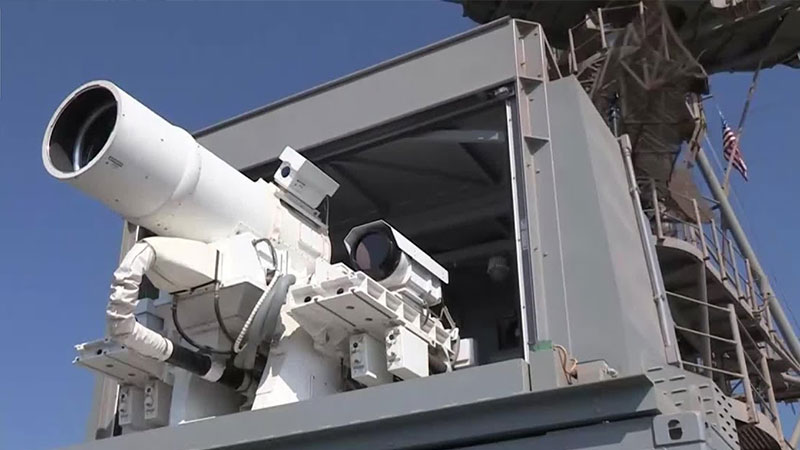
This is why even in the 1960s, the writers of forward-looking sci-fi like Star Trek had the foresight to opt for particle weapons instead of laser weapons, whose limits had already become evident. Good on them. But another intermediary concept, the coaxial plasma railgun, has shown some promise. As I mentioned earlier, there’s the U.S. Air Force’s MARAUDER project, which stands for a Magnetically accelerated ring to achieve ultrahigh directed energy and radiation (damn, my government’s at least good at one thing: coming up with acronyms).
It was designed to accelerate plasma to as fast as 3% the speed of light with a maximum power output of…wait for it…five to ten megajoules. Nice. Now, the only problem is that, like other railgun concepts, MARAUDER has remained at the “R&D” stage for decades, and it’s unclear whether such railguns will actually ever be deployed for practical military use. But initial tests pointing towards success indicate that, at the very least, the theory behind these weapons is sound.
The U.S. Department of Defense also experimented with particle beam weapons as part of Ronald Reagan’s Strategic Defense Initiative, or “Star Wars” program, in the 1980s. A prototype neutral hydrogen beam launched into space successfully operated for four minutes before returning to Earth intact. The weapon is operated by ionizing hydrogen atoms, stripping electrons off atoms or allowing atoms to capture extra electrons.
The charged particles were then accelerated and neutralized again by adding or removing additional electrons. The electrically charged neutral beam of high-energy protons could thus proceed in a straight line at or near the speed of light and smash into its target to damage it. The pulsed particle beam emitted by such a weapon could theoretically contain over a gigajoule of kinetic energy.
As with plasma railguns, besides initial tests in the latter half of the 20th century, it’s uncertain if or when large-scale deployment of particle weapons will become a reality. One reason for this? Overheating.
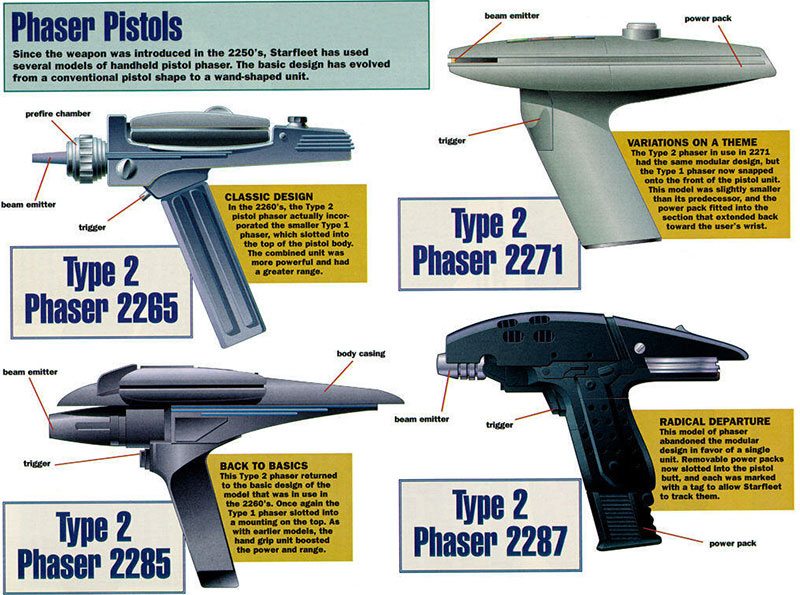
Miniaturization and Thermal Management
Remember, these weapons operate in a manner similar to particle accelerators like the Large Hadron Collider. Particle accelerators use electromagnetic fields to accelerate and direct charged particles along a predetermined path, and they use electrostatic “lenses” to focus these streams to produce collisions.
For example, a cathode ray tube, widely used in many twentieth-century TV and computer monitors, is a very rudimentary type of particle accelerator. But the types of experiments done at the LHC are meant to recreate the conditions that were present at the Big Bang—producing energy yields on the order of…*checks notes*…insane, and temperatures as high as…*checks notes again*…like a bazillion degrees.
One application of particle weapons would be to damage or destroy a target by simply overheating it until it’s no longer operational—something we see quite frequently in Star Trek. But with the power to destroy your target comes the power to destroy yourself.
High-powered particle accelerators are extremely massive—the LHC has a diameter of several kilometres—with highly constricted construction, operation, and maintenance requirements. Thus, it would be very difficult to weaponize such technology in the present or near future. Difficult…but…maybe…not impossible.
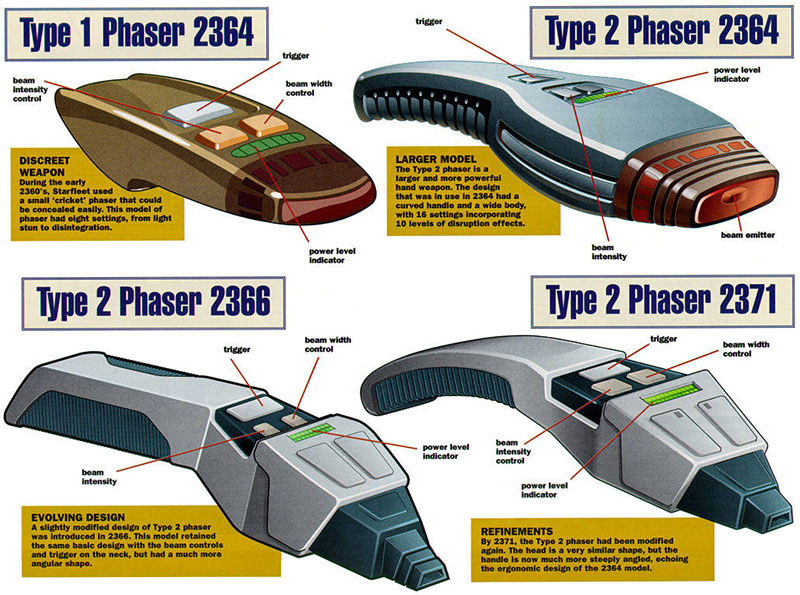
It’s perhaps a bit of a stretch, but if the miniaturization of other technologies like transistors has taught us anything, it’s that, “if you can’t stand the heat, stay out of the kitchen.” Wait, no…that’s not right. “If you can’t stand the heat, innovate ways to manage the heat.” Thermal management is arguably one of the most pressing challenges of the modern-day given our reliance on electronics.
Because the amount of heat output is equivalent to power output, we’ve had to develop techniques for cooling such as heat sinks, thermoelectric coolers, fans, heat pipes, and others.
In the future, it’s likely that we will continue to master engineering on increasingly smaller scales of the universe. Beyond nanotechnology lies pico technology and femtotechnology, which refer to engineering on the scales of 10-12 and 10-15 meters respectively.
In theory, by the 23rd century, even as concepts like Moore’s law reach their physical limits, our materials science may be advanced enough to manage the heat produced by handheld particle weapons. We could manipulate special metals to act as ultra-powerful heat sinks or cold plates, facilitating heat dissipation to cool the components of a phaser or cannon.
These metals would work in conjunction with superconducting crystals to manage the flow of nadions from the energy source towards the target. This complex system of moving parts would be essential in turning the equivalent of a thermonuclear explosion into something more…reasonable.
Conclusion
Admittedly, I mainly focused on Federation weapons in this video, even though phaser technology is quite diverse among various alien races. But the bare-bones, and basic principles are largely the same across different cultures.
Hopefully, this video did serve as an effective overview of how phasers work, the tremendous power they yield, and how future materials science could allow us to manufacture something like them in real life. Just hope you’ll never have to see one pointed at you.
If you want to support my work even further, becoming a patron at patreon.com/orangeriver is a great way to do so.
Watch The Latest Video By Orange River Media Below
Thank you all so much for watching.
If you enjoyed this video, be sure to leave a thumbs up down below and don’t forget to share it. That stuff really helps me out. If you haven’t subscribed, be sure to do that as well and click the bell icon to receive all notifications.
That’s all I have for this week, I’ll see you next time.
You can find Orange River Media at the links below
- YouTube: https://www.youtube.com/orangeriver
- Twitter: https://www.twitter.com/orangerivernw
- Instagram: https://www.instagram.com/orangeriver.nw
- Facebook: https://www.facebook.com/orangerivernw
- Patreon: https://www.patreon.com/orangeriver

